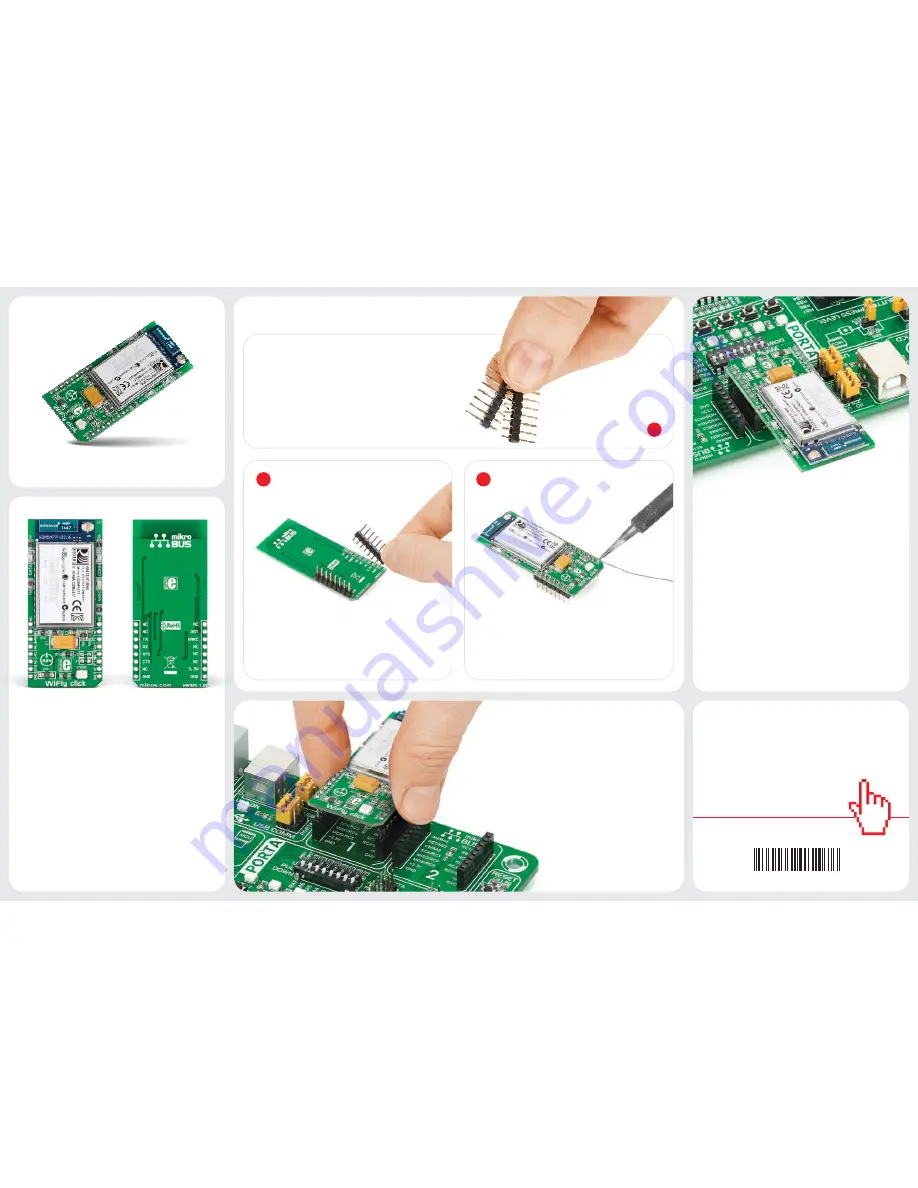
2
3
2. Soldering the headers
3. Plugging the board in
Once you have soldered the headers your
board is ready to be placed into the desired
mikroBUS
™
socket. Make sure to align the
cut in the lower-right part of the board with
the markings on the silkscreen at the
mikroBUS
™
socket. If all the
pins are aligned correctly,
push the board all the way
into the socket.
Turn the board upward again. Make sure
to align the headers so that they are
perpendicular to the board, then solder the
pins carefully.
Turn the board upside down so that
the bottom side is facing you upwards.
Place shorter pins of the header into the
appropriate soldering pads.
Before using your click board
™
, make sure
to solder 1x8 male headers to both left and
right side of the board. Two 1x8 male headers
are included with the board in the package.
4. Essential features
The RN-131 module’s firmware makes it easy
to set up, scan for access points, associate,
authenticate and connect the WiFly click to a
Wi-Fi network. The module is
controlled with
simple ASCII commands
. It has a multitude
of networking applications built in: DHCP,
UDP, DNS, ARP, ICMP, TCP, HTTP client, and
FTP client. Data rates of up to 1 Mbps are
achievable through UART. It contains both an
onboard chip antenna and a connector for an
external antenna. .
1
WiFly click carries
RN-131
, a standalone,
embedded wireless LAN module. It allows
you to connect your devices to
802.11 b/g
wireless networks. The module includes
preloaded firmware which simplifies
integration. The mikroBUS™ UART interface
alone (RX, TX pins) is sufficient to establish
a wireless data connection. Additional
functionality is provided by RST, WAKE, RTSb
and CTSb pins. The board uses a 3.3V power
supply only.
1. Introduction
WiFly click manual
ver 1.00
0100000081976
WiFly
click
click
BOARD
™
www.mikroe.com




















